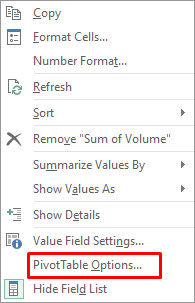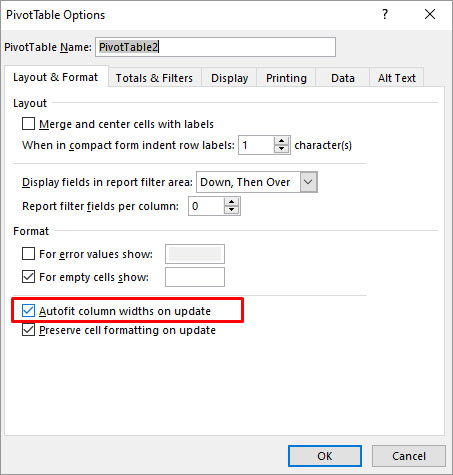
Solved Excel 2003 Spreadsheet Disappears after Opening | Stellar

[Solved] Excel Spreadsheet Disappears after Opening
Several Excel users have reported about experiencing ‘Excel spreadsheet disappears after opening’ issue. The problem occurs when attempting to open an Excel file by double-clicking on the file icon or name. The Excel file opens blank grey screen.

Figure 1 - Excel Blank Screen
User Instances of ‘Excel Open But Can’t See Spreadsheet’ Issue
Instance 1: The user said that “Excel 2016 opens to a blank screen and everything is greyed out. Ribbons at the top of Excel are also not present”.
Instance 2: The user reported that “Attempting to open a spreadsheet, either by double-clicking the file or by opening Excel, it opens but only a blank Excel window is visible. When trying to save that particular file, Excel behaves as though there is no file open at all and all the file saving options, such as save, save as, print, etc. are greyed out.”
Causes Behind ‘Excel Open But Can’t See Spreadsheet’ Issue & the Solutions Thereof
Following are some of the possible reasons behind the ‘Excel open but can’t see spreadsheet’ issue, along with their solutions:
Cause 1: Excel File is Hidden
You may have saved the Excel sheet as a hidden document.
Solution: Unhide Excel File
Verify if your Excel worksheet is hidden by following these steps:
- In Excel, click the View tab, and then click Unhide.
Note: If the ‘Hide’ tab under the View menu is greyed out, the sheet you’re trying to open is not hidden. In that case, proceed to the next workaround.

Figure 2 - Unhide Excel File
- A dialog box will pop-up showing the worksheet name that can be unhidden. For instance, below is an image of Unhide box that lists ‘Daily_Reports’ spreadsheet under Unhide workbook.

Figure 3 – Select and Unhide Excel Workbook
- Click OK to unhide your Excel sheet.
If this fails to work, there’s a possibility that the spreadsheet window pane may have slided to one side of the visible desktop. To bring back the displayed area, click the ‘Arrange All’ option under the View tab. If the issue persists, try the next solution.
Cause 2: Ignore Dynamic Data Exchange (DDE) Option is Enabled
Another reason behind the ‘Excel opens to a blank screen’ issue could be that the “Ignore other applications that use Dynamic Data Exchange (DDE)” checkbox is checked in Excel options.
Usually, when you double-click an Excel file, a DDE message is sent to Excel instructing it to open that particular file. But, if you have the ‘Ignore DDE’ option selected, the DDE message sent to Excel to open a workbook is ignored. As a result, the Excel workbook opens a blank screen.
Solution: Uncheck the Ignore DDE Option
Make sure that the ‘Ignore DDE’ option is unchecked by performing these steps:
Note: Skip these steps for Excel 2019 and Excel Office 365.
- In your Excel window, click File > Options.

Figure 4 - Select Excel Options
- From the left-side of the ‘Options’ window, choose Advanced.

Figure 5 - Excel Options Window
- In ‘Advanced’ window, locate the General section, and then uncheck the “Ignore other applications that use Dynamic Data Exchange (DDE)” checkbox.

Figure 6 - Uncheck Ignore Other Applications that use DDE
- Click OK to apply the changes.
If these steps don’t work, proceed to the next workaround.
Cause 3: Issue within Office Program
Sometimes, problem within your Microsoft Office program might cause Excel to behave oddly and may result in an Excel spreadsheet disappeared issue.
Solution: Repair Office Program
Try repairing your Office program by executing the steps listed below, based on your Windows OS:
For Windows 10:
- Type Settings in the Windows search box.
- Click Settings.
- In ‘Windows Settings’ screen, select Apps.

Figure 7 - Windows Settings Screen
- In ‘Apps & features’ screen, scroll down to your Microsoft Office program and tap on it, and then click the Modify

Figure 8 - Modify MS Office Program
- In ‘How would you like to repair your Office programs’ dialog box, select the Online Repairradio button, and then click the Repair

Figure 9 - Repair MS Office Program
For Windows 8:
- Open Control Panel and click the Uninstall a program option under Programs.
- Select Microsoft Office 365 and then click Change.
- In the window that opens, select Online Repair and then hit the Repair
You may be asked to restart your system after completion of the repair process.
For Windows 7:
- In ‘Control Panel’ window, double-click Programs and Features.
- Under Uninstall or change a program section, select the Office program, and then select Change.
- In the dialog box that appears, choose Online Repair and then choose Repair.
If repairing your Office installation fails to resolve the issue, continue to solution 4.
Cause 4: Problematic Excel and COM Add-ins
Sometimes, Excel and COM add-ins may cause Excel file open a blank grey screen problem.
Solution: Disable the Add-ins
Disabling the Excel and COM add-ins one at a time may help resolve the problem. The steps are as follows:
- Click the File menu in your Excel file and select
- From ‘Excel Options’ left-side panel, click Add-Ins, and then choose COM Add-ins from the ‘Manage’ drop-down. Click the Go

Figure 10 - Select COM Add-ins
- Uncheck one of the add-ins checkbox from the COM Add-ins window, then select OK.

Figure 11 - Uncheck and Disable COM Add-ins
- Restart your Excel program.
If the issue persists, repeat the above steps (1 till 4), except that you need to choose a different add-in in step 3.
If you’re still experiencing the same problem after unchecking all the COM add-ins, repeat all the above steps, except choose ‘Excel Add-ins’ in step 2.
If Excel can load the file, then the add-in that you disabled last leads to the problem. If turning off add-ins does not work, try the next solution.
Cause 5: Problem with Excel File Associations
The Excel file opening a blank screen problem may occur if the file associations are not performing correctly.
Solution: Reset Excel File Associations
Try resetting the file associations in Excel to their default settings. For this, follow the below steps based on your OS.
For Windows 10 and Windows 8.1:
- Select the file that is opening incorrectly and copy it to the desktop.
- Right-click the file and click Properties.
- In the File’s ‘Properties’ window, check your file type next to Type of Filefrom the General tab. For instance, (.docx), (.csv), or (.pdf).
- Next, check to which app your file is associated with from the Opens withoption
If the file type is different than .xlsx, open the file in a different application by following these steps:
- Click the Change button next to the ‘Opens with’ option.
- Click More apps.
- From the list of applications, select the desired app and then check the Always use this app Click OK.
For Windows 8:
- Open Control Panel, click Default Programs, and then select Set your default programs.
- Choose Excel and then tap the Choose default for this program
- In ‘Set Program Associations’ window, choose Select All and then click Save.
For Windows 7:
- In Control Panel, choose Default Programs.
- Click the Associate a file type or protocol with a specific program
- Choose Microsoft Excel Worksheet and click on change program.
- Choose Microsoft Excel under Recommended Programs.
- If you’re unable to find Excel, browse the Excel installation folder.
- Select exe and then choose Excel.
What Next? Use Stellar Repair for Excel to Recover Your File
If the above solutions don’t help recover your Excel file, use an Excel file repair tool, such as Stellar Repair for Excel to recover it. The software can restore the Excel spreadsheet and its components, including tables, pivot tables, charts, formulas, etc. while preserving the spreadsheet properties and formatting.
Check out the video to recover Excel file by using Stellar Repair for Excel software.
Conclusion
This article described the possible causes behind the ‘Excel open but can’t see spreadsheet’ issue, along with their solutions. The manual solutions to resolve the issue require time and efforts. But, if you need to access your Excel file without any delay, use Stellar Repair for Excel software to recover your .xlsx/.xls file in just a few clicks.
Fixed “Cannot Insert Object” Error in Excel | Step-by-Step Guide
Summary: The error “cannot insert object” in MS Excel can prevent you from modifying objects in the worksheet. This blog will discuss the primary reasons behind this error and the possible solutions to fix it. You will also learn about a professional Excel repair software that can help fix the error if it has occurred due to corruption in Excel file.
Many users have reported encountering the “cannot insert object” error while adding/embedding objects into the Excel file. It usually occurs when using Object Linking and Embedding (OLE) to add content (PDF, Microsoft documents) from external applications to worksheet. The error can also occur when using ActiveX control in Excel. Below, we’ll explain why you cannot insert object into Excel sheet and how to troubleshoot the issue.
Why the “Cannot Insert Object” Error Occurs?
- Macro Settings can prevent the insertion of objects into a workbook.
- The Excel file in which you are trying to add an element is corrupted.
- The object (you are inserting into the workbook) is damaged.
- Object size limitations.
- System’s insufficient memory might prevent new objects’ addition.
- Incompatible Excel file format.
- Add-ins controls are disabled.
- Incompatible or faulty Add-ins.
- Issue with Security Settings.
Methods to Fix the “Cannot Insert Object” Error in Excel
You may encounter the “Cannot insert object” error when trying to add an element stored on a network. It can occur due to issues with the file link, such as incorrect file location. In such a case, you can check the link by selecting the link to file option from the Insert tab.
Sometimes, the error can occur if the file in which you are trying to insert the object is locked and password-protected. In this case, you can unprotect the Excel file . If the issue still persists, then you can follow the below methods.
Method 1: Check and Change Restricted Security Settings
Excel provides security settings to protect your workbook. Sometimes, these settings can prevent inserting objects in the file. You can change the security settings to allow Excel to insert objects. To do so, follow these steps:
- Open your Excel application.
- Locate the File and then click Options.
- In Excel Options, click Trust Center.

- Click Trust Center Settings.
- In the Trust Center Settings window, select Protected View from the left pane.

- Under Protected View, unselect the below three options:
- Enable Protected View for files originating from the internet.
- Enable Protected View for files located in potentially unsafe locations.
- Enable Protected View for Outlook attachments.

- Click OK.
- Once you’re done with this, click on Macro Settings in the Trust Center window.
- Under Macro Settings, make sure “Disable all macros without notification” is not selected. If it is selected, then unselect it. After that, click OK.

- Restart Excel to apply the changes.
Method 2: Uninstall Microsoft Office Updates
You can also encounter the “Cannot insert object” error in Excel after installing MS Office updates. It might be due to the issues with the installed updates. To fix this, you can uninstall the recently installed Office updates. To uninstall the Office updates, follow these steps:
- Go to the system’s Control Panel.
- Click Programs and then click Program and Features.
- Search for “View Installed Updates” and click on the desired Office updates.
- Right-click on it and then click Uninstall.
- Follow the uninstallation steps on the screen.
- Once the process is complete, restart the system.
Method 3: Check Memory Usage
The “Cannot insert object” issue can also occur if your system is low on memory. You can check and close unnecessary processes and applications running in the background to free up memory. To do so, follow these steps:
- Press CTRL + ALT + DEL on the keyboard and click Task Manager.
- Click on the Processes tab and search for any unnecessary processes.
- Right-click on the process and then select End Task.
- Restart Excel to see if the issue is fixed.
Method 4: Check Excel File Size
If your Excel file size exceeds the prescribed limit, it can also lead to the “Cannot insert Excel object” error. So, check the Excel file size. You can reduce the file size by removing unnecessary objects, such as formulas or images.
Method 5: Check and Change Excel ActiveX Settings
You can get the “Excel cannot insert object” error if your Excel file contains macros, controls, and other interactive buttons. It usually occurs if the ActiveX Controls option is disabled. You can check and change the ActiveX Settings to fix the issue. Here are the steps:
- Open your Excel application.
- Navigate to File and then click Options.
- In Excel Options, click the Trust Center tab.
- In the Trust Center Settings, click ActiveX Settings.
- Under ActiveX Settings, make sure the “Enable all controls without restrictions and without prompting” option is selected.

- If the option is not selected, then select it and click OK.
- Restart the Excel and check if the error is fixed or not.
Method 6: Repair the Excel Workbook
The “Cannot insert object” error can occur if the object you are trying to insert is corrupted or the file in which you are inserting the object is damaged. If the issue has occurred due to a corrupted Excel file, then you can repair the file using the Open and Repair utility in MS Excel. To use this Microsoft-inbuilt utility, follow these steps:
- In the Excel application, go to the File tab and then click Open.
- Click Browse to choose the affected file.
- The Open dialog box is displayed. Click on the corrupted file.
- Click on the arrow next to the Open button and then click Open and Repair.
- Click on Repair.

- After repair, a message will appear (as shown in the below figure).

- Click Close.
If the Open and Repair utility fails to fix the issue, then try a professional Excel Repair software, like Stellar Repair for Excel. It is designed to repair severely corrupted Excel files. It can restore all the Excel file objects, such as tables, charts, formulas, etc. It helps fix all types of corruption related errors. The software is compatible with all versions of Excel.
Conclusion
You might encounter the “Cannot insert object” error when embedding or inserting objects in Excel. In this post, we have discussed the possible solutions to fix this error. We have also mentioned an Excel repair software that can help to easily repair the corrupted Excel file and recover all the data. You can download the Stellar Repair for Excel’s free demo version to preview the recoverable objects of the corrupted Excel file.
[Fixed] Excel Cannot Open the File Because the File Format or File Extension Is Not Valid
When opening an older version of an Excel file in a newer version, you may encounter the “Excel cannot open the file because the extension is not valid” error. This happens if you have accidentally renamed the file with a different file format or an incorrect file extension. Also, you may get the ‘Excel cannot open the file’ error if the file has become unreadable or corrupted.
This is how the complete Excel error message looks like:
“Excel cannot open the file filename.xlsx because the file format or file extension is not valid. Verify that the file has not been corrupted and that the file extension matches the format of the file.”

Check out this video for a quick demonstration of how to fix “Excel Cannot Open the File Because the File Format or File Extension Is Not Valid”
How to Fix the ‘Excel Cannot Open the File Because the File Format or Extension Is Not Valid’ Error?
Try any of these workarounds to fix the error and regain access to your Excel file data:
Workaround 1 – Change the Default File Format
By default, an Excel file is saved in .xlsx or .xls file format. Trying to open the file with a different or incorrect extension may cause the ‘Excel cannot open the file because the extension is not valid’ error. To fix the error, try changing the Excel default file format by following these steps:
Note: Take a backup of the Excel file that you cannot open and try the steps on the backup copy.
- In Excel 2010 and newer versions, click on the File menu.
Note: For Excel 2007 and earlier versions, click on the Office button.
- On the left panel, click on Options.
- In ‘Excel Options’ window, under Save workbooks section, click on the Save files in this file format: drop-down. Select a file format (i.e., the one supported by your Excel version).

- Click OK.
Check if you can open your Excel file. If not, try the next workaround.
Workaround 2 – Edit the Excel File Permissions
You may receive the ‘Excel file format or file extension is not valid’ error if you lack sufficient permissions to open the file. Usually this happens when you try to open an Excel file received from some other user. Follow these steps to change the file permissions and see if it fixes the problem:
- Right-click on the file that won’t open and click Properties.
- In the file properties dialog box, click the Security tab and then hit the Edit button.

- When the file’s permissions dialog box appears, click on the Add button.
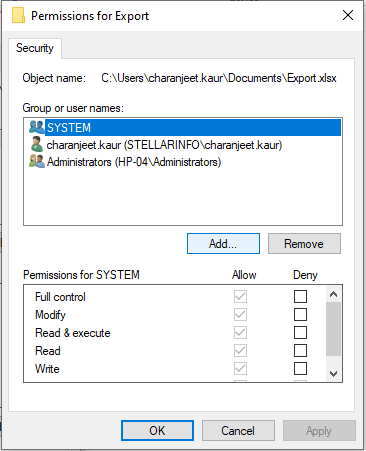
- Click on the Advanced button from the ‘Select Users or Groups’ window.

- Select Find Now. A list of all users and groups will get displayed in a search results box. Choose Everyone group from the list and hit OK.

- You can see the ‘Everyone’ group in the ‘Enter the object names to select’ textbox. Click OK once again to return to the file’s permission dialog box.

- Click Everyone from the Group or user names: box and check all the checkboxes under Allow.

- Click on Apply and then OK.
Now try to open the Excel file. If you’re still getting the Excel file cannot open error, use the following workaround.
Workaround 3 – Recover Unsaved Workbook
If the ‘Excel file extension not valid error’ occurs when attempting to open an unsaved workbook, do the following to recover the unsaved workbook:
- In Excel, click File.
- From the Info screen, under Manage Versions, click Recover Unsaved Workbooks.

Excel will list any unsaved files. Try opening the file and save it. If this doesn’t work, skip to the next workaround.
Workaround 4 – Repair the Workbook
If none of the above workarounds has worked for you, chances are that the Excel file has become corrupted. Try to repair the file using the Excel inbuilt ‘Open and Repair’ utility by following these steps:
- In your Excel application, click on File > Open.
- In the ‘Open’ dialog box that pops-up, select the Excel file you want to repair and click the arrow next to the Open button.

- From the dropdown list, select Open and Repair.

- Excel will ask you to attempt to repair the file or extract data from it. Click Repair to retrieve maximum data. If the Repair option fails, click on Extract Data to recover the data without formulas and values.

If the ‘Open and Repair’ utility doesn’t help fix the corrupted file and/or recover the data, use an Excel repair tool such as Stellar Repair for Excel to regain access to your file and its data.
Stellar Repair for Excel software can help repair severely corrupted XLS and XLSX files. Also, it helps recover all the file components, including tables, pivot tables, cell comments, charts, chart sheets, images, formulas, etc., without impacting the original structure of the Excel file.
To learn how the software works, read this: How to repair corrupt Excel file using Stellar Repair for Excel?
Conclusion
You may encounter the error ‘Excel cannot open the file because the extension is not valid’ when opening a workbook with a different file format or an incorrect file extension. Also, the error may occur if the Excel file has turned corrupt. This article has covered some of the most effective workarounds to resolve the error. But if nothing works, you can try to repair the Excel file and retrieve its data using the Stellar Repair for Excel software.
How to Resolve ‘Excel found unreadable content in filename.xlsx’ Error in MS Excel?
When opening an Excel spreadsheet in MS Office 2010/2007, you may get the following error message:
“Excel found unreadable content in ‘[filename].xlsx’. Do you want to recover the contents of this workbook? If you trust the source of this workbook, click Yes.”

On clicking ‘Yes’, you may face any of these scenarios:
Note: If you choose to click ‘No’, then open your MS Excel application and click file > Open. When the Open dialog box opens, browse and select the file showing the ‘Excel found unreadable content’ error and then choose ‘Open and Repair’ option. If this didn’t help, try using a third-party Excel repair tool to save time troubleshooting the issue and restoring the file with all its data intact.
Scenario 1: The following message may pop-up.
“Excel was able to open the file by repairing or removing the unreadable content. Excel recovered your formulas and cell values, but
. Click to view log file listing repairs errorxxx.xml.”

The message clearly states that your Excel file might open, but images may be lost and other such inconsistencies can crop up.
Scenario 2: The error is followed by another error message, like “The file is corrupt and cannot be opened“.
Watch our short video for a quick overview of the solutions to fix “Excel found unreadable content in filename.xlsx”
What Causes ‘Excel Unreadable Content’ Error?
You may encounter the ‘Excel file unreadable content’ error due to corruption of complete Excel file or corruption in certain areas (like Pivot Table, Formulas, Styles, or other objects) in the file. According to Microsoft, you may find it difficult to determine the root cause behind Excel file corruption. Corruption could occur in different scenarios, like power surge, a network glitch, copying and pasting corrupted data from another file, etc.
Also Read: How to recover data from corrupt or damaged Excel file 2010 & 2007?
Workarounds to Resolve the ‘Excel found unreadable content in filename.xls’ Error
There is no permanent solution to fix the ‘Excel found unreadable content’ error. But, following are some workarounds you can try to resolve the error.
Note: Before you try any of these workarounds, run Excel with administrator privileges and try opening the Excel file that is throwing the ‘unreadable content’ error. If this doesn’t fix the error, proceed with the workarounds below.
Workaround 1 – Try Opening the File in Excel 2003
Sometimes a problem in the current Excel version might prevent a file from opening. To resolve this error, try opening the problematic file in Excel 2003. If the file opens, save the data in a web page file format (.html) and then try opening the .html file in MS Excel 2010/2007. The detailed step-wise instructions are as follows:
- Open the .xls file in Excel 2003.
- When the file opens, click on File > Save.
- In the ‘Save As’ dialog box, choose Web Page (.html) as the ‘Save as type’ and then click ‘Save.’ Doing so will save everything from your .xls file, opened with 2003, in .html file format.
- Open the .html file in Excel 2010/2007. And then, save the file with .xlsx extension with a new name to avoid overwriting the original file.
Now, open the Excel 2010/2007 file and check if the error is fixed. If not, use the next workaround.
Workaround 2 – Make the Excel File ‘Read-only’
Try to open your ‘.xlsx’ file by making it ‘read-only’. Follow these steps:
- In Excel, click ‘File’ from the main menu.
- Select ‘Save’ for a new document or ‘Save As’ for a previously saved document in the screen that appears.

- From the ‘Save As’ dialog box, click Tools > General Options.
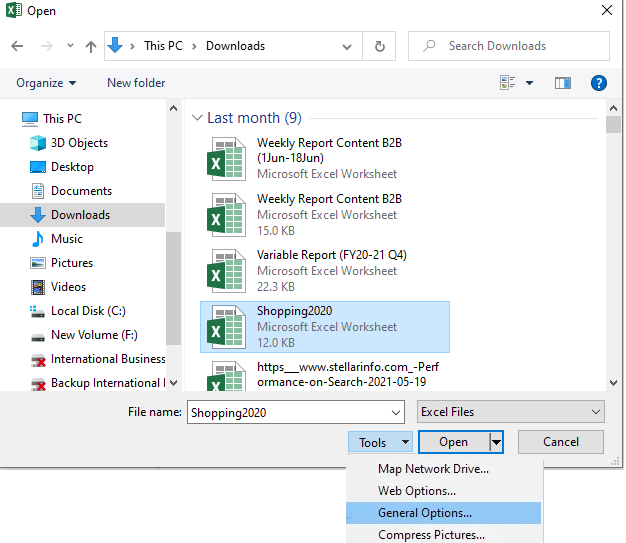
- Click on the ‘Read-only recommended’ checkbox to make the document read-only and then click ‘OK’.

Now open a new ‘.xlsx’ file and copy everything from the corrupt Excel file to this new file. Finally, save this file and try to open it again.
Workaround 3 – Move Excel File to a New Folder
Some users have reported that they could open their Excel file, following the ‘Excel unreadable content’ error, by simply moving the file to a different folder and saving it under a new name. You can also move the affected file to a new folder and try opening it. If this didn’t help resolve the error, follow the next workaround.
Workaround 4 – Install Visual Basic Component
At times, it is seen that installing the ‘Visual Basic’ component of MS Office 2010 resolves the ‘Excel found unreadable content 2010’ error. To do so, follow these steps:
- Navigate to Control Panel > Programs and select Microsoft Office 2010.
- Click ‘Change’ and then select ‘Add or Remove Programs’.
- Next, click the ‘plus’ sign provided next to Office Shared Features.
- Click ‘Visual Basic for Applications’. After that, right-click and choose ‘Run from My Computer’ and hit the ‘Continue’ button.
- Reboot your system when this process finishes.
Now check if the issue has been resolved or not.
What Next?
If none of the workarounds mentioned above works for you, use a professional Excel repair software, such as Stellar Repair for Excel. The software repairs corrupt MS Excel sheets without modifying their original content and formatting. In addition, it can repair single or multiple Excel (XLS/XLSX) files in a few simple steps.
Steps to Repair Corrupt Excel File using Stellar Repair for Excel Software
Install and run Stellar Repair for Excel software.
From the software main interface window, click ‘Browse’ to select the corrupt file. If you are not aware of the corrupt Excel file location, click on the ‘Search’ button.
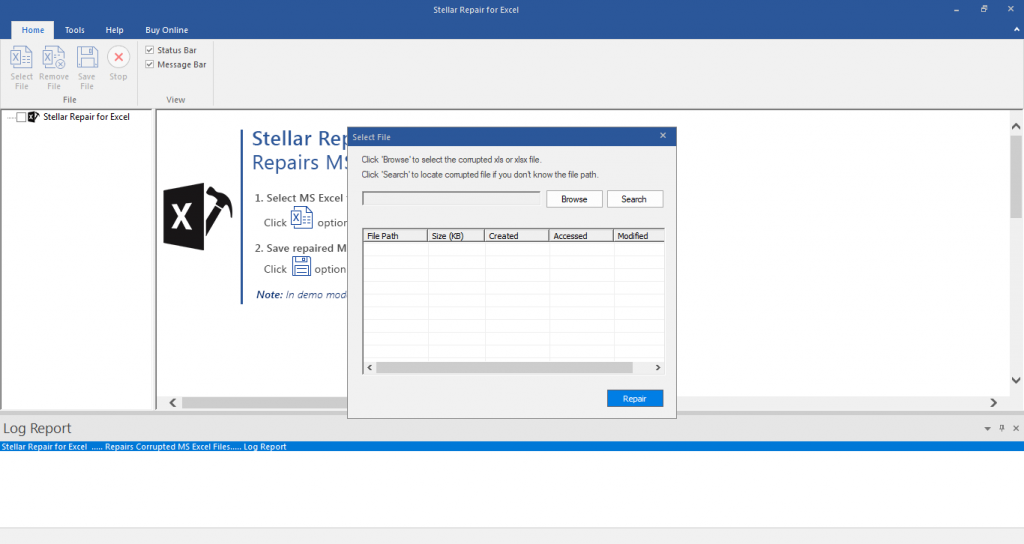
- Click on the ‘Repair’ button to scan and repair the selected file.
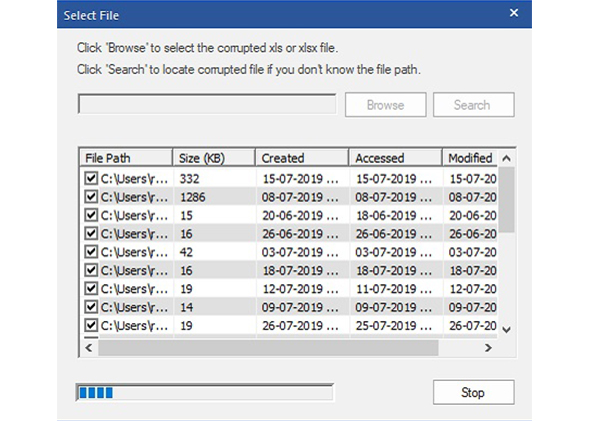
- A preview window will open with recoverable Excel file data. Once satisfied with the preview result, click on the ‘Save File’ button on the ‘File’ menu to start the repair process.
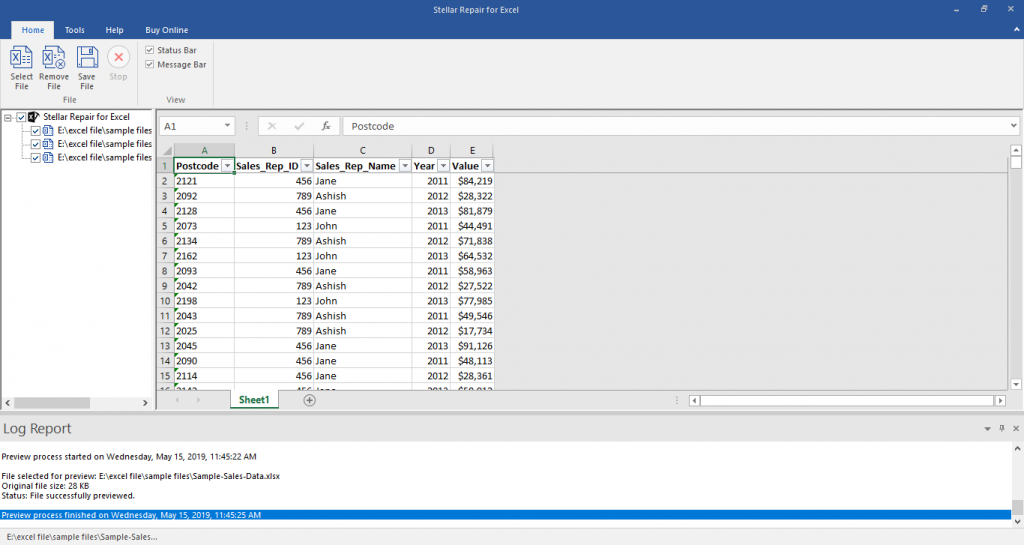
- Select the destination to save the file.
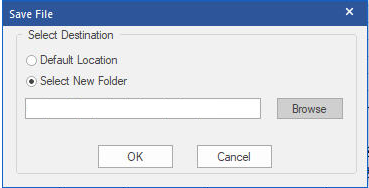
- Click ‘OK’ when the ‘Repaired file saved successfully’ message appears.

The repaired Excel file will get saved at the selected location.
Solved - The File is Corrupted and Cannot be Opened - Excel
Summary: Unable to open Excel file due to the error ‘The file is corrupted and cannot be opened’? Read this blog to find more details about the error, possible reasons behind it, and solutions to fix the error. In addition, the blog mentions about Stellar Repair for Excel software that can help fix the Excel error in a few clicks. Download the software now and see free preview of the file.
About the Error
Microsoft Excel is a widely used spreadsheet application that comes bundled with MS Office. Users tend to update the application with new security patches and features. Sometimes these updates can cause problems, and result in “The file is corrupted and cannot be opened” error.

Figure 1 – Excel File Corrupted Error Message
Other Possible Reasons behind ‘The File is Corrupt and Cannot Be Opened’ Excel Error
- Opening an older Excel version file in a newer version of Excel. For instance, opening Excel 2013, 2010, or earlier versions in Excel 2016.
- When attempting to open a Microsoft Office (Excel) email attachment in Microsoft Outlook 2010, MS Office 2010 reports a problem with the file preventing it from opening.
How to Fix the ‘Excel File is Corrupt and Cannot Be Opened’ Error?
Here are a few possible solutions that you can try to fix the ‘Excel file is corrupt and cannot be opened’ issue and open your Excel file.
Solution 1: Changing Component Services Settings
Solution 2: Changing the Protected View Settings
Solution 3: Repair Excel Files using Excel Repair Software
Solution 1: Changing Component Services Settings
[Caution] Changing Component Services settings requires making changes to the registry, and any mistake can harm your computer.
Follow these steps to change ‘Component Services’ settings:
Click ‘Start’ or ‘Win+R’ and type ‘dcomcnfg’ and press ‘Enter’.
In the navigation pane, expand the ‘Component Services’, and then expand ‘Computers’.

Figure 2 – Component Services Settings
- Next, right-click on ‘My Computer’, and then click ‘Properties’.
When the ‘My Computer Properties’ dialog box appears, click on the ‘Default Properties’ tab and then set the following values:
- Default Authentication Level: Connect
- Default Impersonation Level: Identify

Figure 3 – Illustrates My Computer Properties
- Click ‘OK’ to change ‘Default Properties’
Solution 2: Changing the Protected View Settings
[Caution] Disabling the ‘Protected View’ can put your system at high risk. Viruses attached to the Excel files can attack and infect your system. Be careful before using this option.
Excel 2010 file cannot open due to the ‘Protected View’ setting in Microsoft Outlook 2010. And so, changing the setting may help fix the error. For this, perform these steps:
- Open MS Excel 2010, go to the ‘File’ menu and click ‘Options’.

Figure 4 – Options
- When the ‘Excel Options’ window opens, click on ‘Trust Center’ and then on ‘Trust Center Settings’.

Figure 5 – Open Trust Center Settings
- Next, choose ‘Protected View’ and uncheck all the options including ‘Enable Protected View for Outlook attachments’ if you use Outlook for email.

Figure 6 – Uncheck Protected View Settings
- Click ‘OK’. Restart the application and try opening the Excel file again.
If none of the above solutions works for you, your Excel file is likely severely corrupt. To repair corrupt Excel files, you need to use advanced options like Stellar Repair for Excel tool. It repairs corrupt and damaged Excel files and helps in retrieving lost data.
Solution 3: Use Excel File Repair Tool
Considering the risks associated with the above solutions, it’s better to use an Excel repair tool to repair single or multiple corrupt Excel files at once. The process is simple, and even a novice can use the Excel file repair tool to repair Excel files with the help of the following steps:
- Download Stellar Repair for Excel and install it.
- Launch the tool. In the tool’s main interface, click ‘Browse’ to select the file. If you don’t know the file location use the ‘Search’ option.

Figure 7 – Illustrates Selecting Corrupt Excel File in Stellar Repair for Excel
- Select the file, and then click on Repair.

Figure 8 – Illustrates Initiating Excel File Repair in Stellar Repair for Excel
- The software scans and lists the Excel file in the left pane. Click on the file to preview its recoverable objects in the right pane.

Figure 9 – Illustrates Preview of Recoverable Excel File Objects
- Save the repaired file at either the default location or a user-specified location.

Figure 10 – Illustrates Saving Repaired Excel File in Stellar Repair for Excel
- Click ‘OK’ to save the repaired Excel file. After the repair process is completed, browse to the location and open it with MS Excel 2010 or any other version.

Figure 11 – Illustrates Saving Complete Message in Stellar Repair for Excel
You will be able to access your Excel file from the selected location.
Conclusion
You can use the first two possible solutions to fix the “The file is corrupted and cannot be opened” error. If you can access the file, save its data and restore the default settings. However, if the file is corrupt and the data retrieved using the first two solutions is inconsistent or incomplete, use Stellar Repair for Excel. This tool can help you recover Tables, Charts, Chart Sheets, cell comments, Images, and Formulas while preserving the worksheet properties and cell formatting. You can also preview the file and verify the data inside the file before saving it.
Easy Steps to Make Excel Hyperlinks Working
Summary: This blog discusses why hyperlinks won’t work in Excel and solutions to fix it. If nothing works, try using Stellar Repair for Excel software to recover your workbook with hyperlinks and all the data intact.
Hyperlinks in your Excel file could be references to a file’s location on the computer or a location within the same worksheet. Or, hyperlinks might be pointing to a URL. Sometimes, the hyperlinks won’t work and any of the following errors may pop up on your screen on clicking a hyperlink:
‘Cannot open the specified file.’

‘This operation has been canceled due to restrictions in effect on this computer. Please contact your system administrator.’

Causes of ‘hyperlinks not working in Excel’ problem, and solutions thereof
Here are some of the possible causes behind the ‘hyperlinks not working’ issue and solutions to fix it:
Cause 1 – Change in the name of the hyperlinked file
If the file name that appears in the hyperlink text is different than the actual file name, it will prevent the hyperlink from working.
Solution – Link to the renamed file
Ensure that the links in the Excel file are updated and points to the renamed file. For this, right-click the hyperlink and select ‘Edit the hyperlink’. Next, in the hyperlink address, replace the current filename with the renamed one in the hyperlink address.
Cause 2 – File name has a pound (#) sign
When you create a hyperlink for a file in Excel, you cannot use a pound character (#) in the file name that appears in the hyperlink. That is because the pound sign is not accepted in hyperlinks and may lead to the ‘Cannot open the specified file’ error.
Note: While you can use a pound character in a file name, it cannot be used in hyperlinks in an MS Office document.
Solution – Rename the file name and remove the pound sign
Open the file that contains the ‘#’ sign and rename it by following these steps.
- Right-click the cell containing the hyperlink that is not working, and click Edit Hyperlink.
- From the Address box, copy the address of the file you are linking to.
- Go to the location where the file is stored, right-click on the file, and click Rename.
- Remove the ‘#’ character from the name of the file.
- Go back to the Excel file, right-click on the problematic hyperlink, and choose Edit Hyperlink. Next, browse and select the renamed file.
- The renamed file without the pound sign will be added in the Address box.
- Click OK.
Now try opening the hyperlink.
Cause 3 – Sudden system shutdown causes abrupt closing of Excel
There may be a discrepancy in the data in hyperlinks when a system shut down suddenly, without properly closing the Excel file. And so, when trying to open a link, it won’t open.
Solution – Enable the option to save hyperlinks
There is an inbuilt option in Excel to update hyperlinks every time the workbook is saved. Follow these steps to enable that option:
Note: The steps may vary based on the Excel version you are using.
For Excel 2013, 2016, or 2019:
- Open Excel Workbook -> Go to File->Options->Advanced
- Scroll down to find the General tab and click on Web Options
- Web Options Window pops-up
- In the Web Options Window, go to Files Tab and select the ‘Update Links on save‘ checkbox
- Click on OK button and your option is saved
The steps are also explained in the image below:

For Excel 2007:
- Click the Office button
- Select Excel Options, then follow Step 1) to Step 5), as mentioned above and get the Excel Hyperlinks to work again.
Still unable to open hyperlinks in Excel?
If you fail to make Excel hyperlinks work using the above-discussed solutions, use an Excel repair tool to fix the hyperlinks issue. Download the Stellar Repair for Excel to repair an XLS/XLSX file and restore the hyperlinks.
See the working of the tool here:
The tool recovers all components of the Excel file including tables, charts, chart sheets, cell comments, images, formulas, and more. You can repair multiple worksheets and fix all dysfunctional Excel hyperlinks across multiple worksheets in a single workbook. Click on the workbook, select all worksheets and start repairing
Conclusion
Carefully read the possible causes behind the ‘Excel Hyperlinks not working’ issue to understand what resulted in the issue in the first place. If nothing helps, use Stellar Repair for Excel to restore the hyperlinks and save the result in a new Excel file, without interfering with worksheet properties and cell formatting.
[Fixed] Excel PivotTable Overlap Error | Troubleshooting Guide
In Excel, you need to refresh the pivot table data source after adding new data. However, sometimes, while refreshing the pivot table, you may experience an error “PivotTable Report cannot Overlap.” This issue usually appears when there are multiple pivot tables in a single worksheet. It often occurs when you try to place one pivot table on top of another or if you try to set a common cell range to multiple pivot tables. However, there are many other causes associated with the error.
Reasons for a pivot table report cannot overlap another pivot table report issue:
- Merged cells in a pivot table may cause the overlap issue
- Using the same range of cells for multiple pivot tables
- Hidden columns
- Preserve formatting option is enabled
- Modifying the pivot table using a macro that is corrupted
- Using the workbook.RefreshAll method incorrectly
- Number of pivot items goes beyond the number of cells available
- Excel file is corrupt
- Corrupted Pivot table
- Some columns are labeled with the same name
Methods to Fix Excel PivotTable Report Cannot Overlap Error
You can get the pivot table overlapping issue if the field in pivot table crossed the maximum items limit. According to the Microsoft guide, you can specify up to 1,048,576 items to return per field. Check the cell fields in your pivot table. Also, make sure each column’s label is unique. Sometimes, the hidden columns or hidden sheets can also prevent you from modifying the pivot tables. You can check for hidden columns in the Data view.
If the error still persists, then try the below-mentioned methods to fix the error.
1. Move the Pivot Table to a New Worksheet
The “PivotTable Report cannot Overlap” error can occur if there is an issue with the columns in the pivot table. In this case, you can try moving the pivot table to a new worksheet. Moving the pivot table to a different worksheet automatically resets the column width according to the new sheet and creates space that can help in preventing the overlapping issue. Here are the steps to do so:
2. Disable the Background Refresh Option
When the background refresh option is enabled, then Excel updates the pivot table in the background after every minor change. It may create issue if you have a large-sized Excel file with multiple pivot tables. You can try disabling the background refresh option. Here’s how:
The Connection Properties dialog box is displayed. Unselect the “Enable background refresh” option and select the “Refresh data when opening the file”
Click **OK.

**
3. Disable Autofit Column Widths
When the Autofit column widths option is enabled, Excel automatically resizes the pivot table whenever you make changes to it. These automatic adjustments can sometimes add or remove fields which can result in the PivotTable Report cannot Overlap issue. To fix this, you can disable the “Autofit column widths on update” option. To do this, follow these steps:
Right-click on any field on the pivot table.
Select **PivotTable Options.

**
In the PivotTable Options window, unselect Autofit column widths on update.

Click on the OK.
4. Check the Workbook.RefreshAll Method
Several users have reported experiencing the “Excel PivotTable Report cannot Overlap” error when using the Workbook.RefreshAll method. This method is used to refresh data ranges in the pivot report. Sometimes, the error can occur due to missing variable that is representing an object (workbook) in a query. So, make sure you’re using the Workbook.RefreshAll function correctly.
5. Repair your Excel File
You may also encounter the “A PivotTable Report cannot Overlap” error if the Excel file is corrupted. You can use the inbuilt utility in Excel - Open and Repair to repair the corrupt file. Here’s how:
- In your Excel application, click on the File tab and then click Open.
- Click Browse to select the desired file.
- In the Open dialog box, click on the corrupted file.
- Click on the arrow next to the Open button and then click Open and Repair.
- Click on the Repair
- In the displayed message, click Close.
If the “Open and Repair” utility fails to fix the issue, then it means there is high level of corruption in the Excel file. To tackle this, you can take the help of a professional Excel file repair tool, such as Stellar Repair for Excel. The tool can easily repair severely corrupted Excel file and recover all the objects of the file, such as pivot tables, macros, charts, etc. with 100% integrity. You can download the free trial version of the tool to check its functionality.
Conclusion
In this article, we have discussed the possible reasons behind the “PivotTable Report cannot overlap” error in Excel. You can follow the methods mentioned above to fix the issue. The error may also occur if the Excel file gets corrupted. In this case, you can try repairing the corrupted Excel file using the Open and Repair utility or consider using Stellar Repair for Excel . The tool makes the process of repairing the Excel file smooth and quick.
Also read:
- [Updated] 10 Top Must-Have Gear Items for YouTubers for 2024
- [Updated] Journey Into Joke-Making Mastering the Art of GIF Memes for 2024
- Augmenting AI Intelligence: Core Desired Traits for GPT-5
- Effortless Setup for Elgato Drivers - Download & Install in a Flash!
- Hard Reset Sony Xperia 1 V in 3 Efficient Ways | Dr.fone
- How To Upgrade or Downgrade Apple iPhone X Without iTunes? | Dr.fone
- In 2024, How to Reset Gmail Password on Oppo Reno 10 Pro+ 5G Devices
- In 2024, How to Screen Mirroring Meizu 21 to PC? | Dr.fone
- The way to recover deleted contacts on Tecno Phantom V Flip without backup.
- This is how you can recover deleted pictures from Tecno Phantom V Flip.
- Undelete lost photos from Vivo Y27 4G.
- Undeleted lost videos from Gionee F3 Pro
- Updated 2024 Approved Top Mac Video Editors Of
- Title: Solved Excel 2003 Spreadsheet Disappears after Opening | Stellar
- Author: Ian
- Created at : 2025-01-16 16:38:26
- Updated at : 2025-01-21 21:08:49
- Link: https://techidaily.com/solved-excel-2003-spreadsheet-disappears-after-opening-stellar-by-stellar-guide/
- License: This work is licensed under CC BY-NC-SA 4.0.







